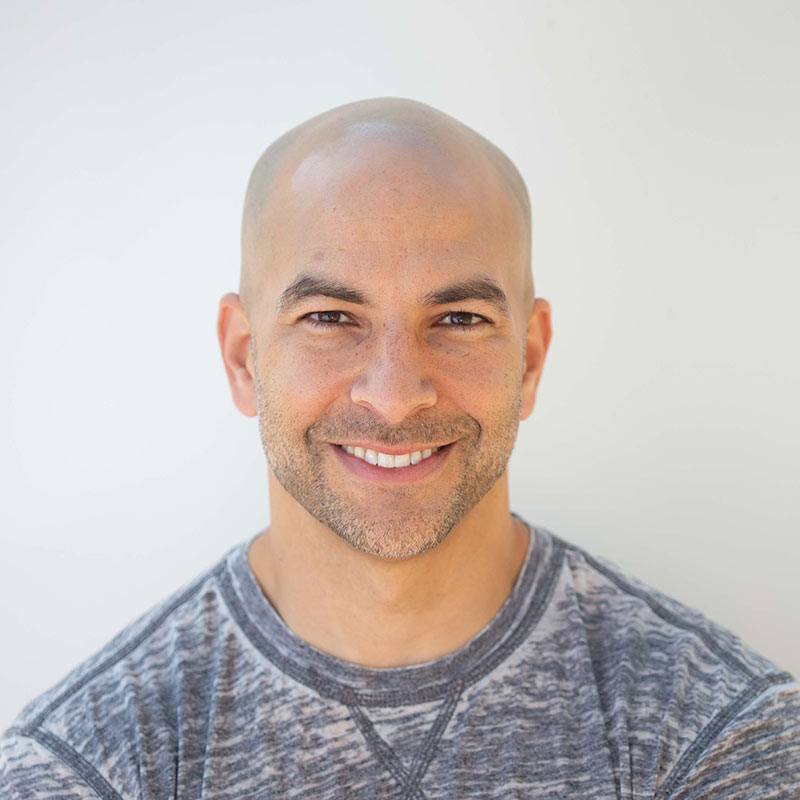ADHD & How Anyone Can Improve Their Focus
Huberman explores ADHD, including myths, biology, treatments (behavioral, pharmacologic), brain-machine interfaces, and focus training. He discusses dopamine’s role in neural networks, attentional lapses, and blinks’ impact on time perception and attention. Additionally, he reviews medications, diet controversies, and the influence of technology on ADHD.
Key Takeaways
High level takeaways from the episode.
Protocols
Science-based tools and supplements that push the needle.
Source
We recommend using this distillation as a supplemental resource to the source material.
Full Notes
ADHD and Focus
- ADHD used to be called ADD
- First appeared in medical literature in 1904
- Strong genetic component
- Higher probability if a close relative has ADHD
- Identical twin with ADHD: 75% chance
- Fraternal twin with ADHD: 50–60% chance
- Parent with ADHD: 10–25% chance
- ADHD is not related to intelligence
- No correlation with standard IQ tests or other forms of intelligence
- People with ADHD can have high or low IQs, emotional intelligence, etc.
Improving Focus and Concentration
- Tools to enhance concentration and focus for everyone, not just those with ADHD
- Overcoming symptoms of ADHD through rewiring neural circuits and understanding brain chemicals
- Importance of not self-diagnosing or diagnosing others with ADHD
- Proper diagnosis should be done by a psychiatrist, physician, or well-trained clinical psychologist
ADHD Overview
- Half may resolve with proper treatment
- Increased levels of ADHD in adults
ADHD Characteristics
- Poor attention and focus
- High levels of impulsivity
- Easily distractible
- Can hyperfocus on things they enjoy or are intrigued by
- Challenges with time perception
- Often run late, procrastinate
- Can focus well if consequences are severe enough
- Spatial organization skills often subpar
- Use “pile system” for organizing belongings
- Trouble with working memory
- Can have good memory for past events
- Struggle to keep information online for short-term use
ADHD and Neurobiology
- ADHD shares some characteristics with age-related cognitive decline and frontotemporal dementia
-
Treatments, supplements, and tools for ADHD may overlap with those for age-related cognitive decline
ADHD and Focus -
People with ADHD can obtain heightened levels of focus, even hyper focus, for things that excite them
- Dopamine is responsible for focus, motivation, and perception
- Released from neurons as a neuromodulator
- Creates a heightened state of focus and motivation
- Narrows visual and auditory focus
- Two main types of neural circuits related to ADHD and dopamine:
- Default mode network: active when not engaged in specific tasks
- Includes dorsolateral prefrontal cortex, posterior cingulate cortex, and lateral parietal lobe
- Task networks: goal-oriented networks
- Includes medial prefrontal cortex and other areas that suppress impulses
- Default mode network: active when not engaged in specific tasks
- In a typical person, default mode network and task networks are anticorrelated (opposing each other)
- In a person with ADHD, default mode network and task networks are more coordinated, which is abnormal
- Dopamine acts as a conductor, regulating the activity of these networks
- Low dopamine hypothesis of ADHD: suggests that dopamine levels may be insufficient or not functioning properly in people with ADHD
ADHD Treatments and Recreational Drugs
- Current and previous treatments for ADHD, as well as recreational drugs used by people with ADHD, can provide insight into how dopamine regulates neural circuits
- Not promoting recreational drug use, but examining drug-seeking behavior can help understand the desire to remedy attention deficits
-
2015 paper by Spencer in Biological Psychiatry formalized the low dopamine hypothesis of ADHD
Dopamine and ADHD -
Low dopamine hypothesis in ADHD
- Low dopamine levels lead to unnecessary firing of neurons
- Disrupts the balance between task-related networks and default mode networks
- People with ADHD often self-medicate with stimulants
- Caffeine, nicotine, sugar, cocaine, amphetamines
- Increases dopamine levels, leading to better focus and attention
- Children with ADHD
- Prefer sugary foods, which increase dopamine levels
- Calmer and more focused when consuming stimulants
ADHD Medications
- Ritalin, Adderall, Modafinil
- Prescription stimulants used to treat ADHD and narcolepsy
- Increase dopamine levels in the brain
- Ritalin (methylphenidate)
- Similar to amphetamine
- Time-release formulas
- Adderall (combination of amphetamine and dextroamphetamine)
- More commonly prescribed for ADHD
- Shorter life in the bloodstream, allowing for better dosage control
- Modafinil
- Also used to treat ADHD and narcolepsy
Understanding ADHD Medications
- Structurally and chemically similar to street drugs like cocaine and methamphetamine
- Increase dopamine, norepinephrine, and to a lesser extent, serotonin levels
- Appropriate dosages and medical supervision can lead to effective treatment for ADHD
- Many people achieve relief with these drugs, especially if started early in life
-
Some people take these drugs without a clinical diagnosis of ADHD
- Adderall is the most commonly used in this context
Recreational Stimulant Use and ADHD
- Adderall is the most commonly used in this context
-
25%-35% of individuals aged 17–30 use Adderall without ADHD diagnosis
- Second in incidence only to cannabis
- Stimulant use is common in this age group
- Reasons for stimulant use:
- Increased focus and energy
- Caffeine, nicotine, and other stimulants have long been used for this purpose
- ADHD medications like Adderall and Ritalin are amphetamines
- Surprisingly, they help children with ADHD focus and calm down
ADHD Medication in Children
- Pediatric neurologist’s perspective:
- Medicating children with ADHD can be beneficial if the lowest possible dose is used and adjusted over time
- Medication should be adjusted across the lifespan
- Puberty triggers activation of frontotemporal task-related executive functioning
- Ability to focus and control impulses improves with age
- Early treatment is key due to high neuroplasticity in childhood
- Ages 3–12 have the highest neuroplasticity
- Early treatment can help develop appropriate levels of functioning and focus
Diet and ADHD
- Elimination diets, avoiding sugars, dairy, and gluten have been suggested to improve ADHD symptoms
-
Studies and data are needed to determine the effectiveness of dietary changes in treating ADHD
Role of Diet and Nutrition in ADHD -
Children with ADHD tend to pursue sugary foods to increase dopamine levels
- Study on the effects of diet on ADHD symptoms:
- 100 children, 50 in the elimination diet group, 50 in the control group
- Crossover design, children served as their own control
- Dramatic effects observed: enhanced focus, less impulsivity, better control of body movement
- Elimination diet: oligoantigenic diet, removing foods children had mild allergies to
- Criticisms of the study: skepticism about the overall structural design
- Anecdotal evidence from pediatric neurologist:
- Elimination of simple sugars has a dramatic and positive effect on ADHD symptoms
- Oligoantigenic diets are controversial
- Consensus: children with ADHD should avoid high sugar and simple sugar foods
- Exploring existing allergies to foods might be beneficial
- Omega‑3 fatty acids and ADHD:
- Known benefits: antidepressant effects, mood elevation, cardiovascular protection, immune system support
- Modest positive effects on focus and attention
- Can help adults with ADHD function well on lower doses of medication or eliminate medication entirely in rare cases
- Omega‑3 fatty acids play a supportive or modulatory role in ADHD treatment
Key Takeaways:
- Diet can have a significant role in reducing ADHD symptoms
- Children with ADHD should avoid high sugar and simple sugar foods
- Exploring existing food allergies might be beneficial
-
Omega‑3 fatty acids can play a supportive role in ADHD treatment
ADHD and Focus -
Distinction between modulation and mediation is important for understanding ADHD
- ADHD diet, Oligoantigenic diet, and supplements are often discussed as potential treatments
Neural Circuits and Chemistry of Focus
- People with ADHD can focus on things they care about but may experience more attentional blinks than others
- Attentional blinks: when focusing on one thing, you may miss other information
- Distractibility in ADHD could be due to over-focusing on certain elements and missing others
Open Monitoring and Panoramic Vision
- Open monitoring: a property that allows for better attention and recognition of multiple targets
- Panoramic vision: dilating your gaze to see a wider view, accessing open monitoring state
- Can be trained and practiced to improve focus
Reducing Attentional Blinks
- Studies show a simple practice of focusing on interoception (internal body sensations) for 15–17 minutes can significantly reduce attentional blinks
-
This practice can improve focus in a near-permanent way without additional training
Meditation and Attention -
Meditation can improve attention and focus in people of all ages
- 17-minute meditation sessions can rewire the brain for better attention
- Can offset age-related cognitive decline
Attentional Blinks and Time Perception
- Attentional blinks: moments when the mind shuts off and misses information
- Actual blinks can affect time perception
- Fast blinks: higher frame rate, time seems to pass slowly
- Slow blinks: lower frame rate, time seems to pass quickly
- Dopamine levels affect time perception and attention
- Higher dopamine levels: overestimate time intervals, slow-motion mode
- Lower dopamine levels: underestimate time intervals, disorganized in time
Improving Attention through Blink Control and Physical Activity
- Training to control blink frequency can improve attention and focus
- Physical activity before focusing tasks can help improve attention
- Fidget toys and repetitive physical activities can help children with ADHD focus better
-
Adults can also benefit from physical activity to improve focus and attention
ADHD and Reverberatory Activity -
ADHD individuals have a lot of reverberatory activity in their nervous system
- Constant desire to move, difficulty sitting still and focusing
- Techniques to reduce shaking and improve focus:
- Tapping foot, bouncing knee, pacing while speaking, nodding head, gesticulating
Blinking and Focus
- Drugs like Ritalin, Adderall, and caffeine make us blink less, increasing focus
- Tiredness leads to more blinking, reducing focus
- Blinking regulates the amount of information going into the nervous system
Cannabis and Focus
- Chronic cannabis users have decreased spontaneous eye blink rates
- Cannabis increases dopamine and other neurochemicals, creating a state of calm and focus
- However, cannabis is known to deplete memory
Interoceptive Awareness in ADHD
- Interoceptive awareness: one’s sense of their own internal state (heartbeat, breathing, etc.)
- Study found no difference in interoceptive awareness between ADHD and non-ADHD individuals
- ADHD individuals are aware of their internal state, but struggle with coordinating task-directed networks and default mode networks
ADHD Medications
- Classic drugs: methylphenidate (Ritalin), modafinil, Rmodafinil, Adderall
- Work by increasing levels of dopamine and norepinephrine
- Dosages vary according to severity and age
-
New and emerging non-prescription approaches focus on increasing dopamine, acetylcholine, and serotonin levels using supplement compounds
- Showing promising efficacy in peer-reviewed studies
Smart Drugs and Nootropics
- Showing promising efficacy in peer-reviewed studies
-
Drugs for ADHD treatment are sometimes referred to as smart drugs or nootropics
- Examples include Ritalin, Adderall, caffeine, methamphetamine, and cocaine
- The distinction between drugs of abuse and drugs of treatment is a fine and blurry line
- All carry side effects, such as addiction, sexual dysfunction, and cardiovascular problems
Drug Schedules for ADHD Treatment
- Researchers are exploring drug schedules for ADHD treatment
- Questions include whether to take Adderall every day or every other day, or only occasionally
- Combining drug treatment with behavioral exercises may be more effective
- The goal is to taper off drugs and use the trained circuits without chemical intervention
Omega‑3 Fatty Acids and ADHD
- Consumption of omega‑3 fatty acids can positively modulate attention and focus
- 300 milligrams of DHA per day is the threshold for attentional effects
- Phosphatidylserine (200 milligrams per day) can reduce ADHD symptoms in children when combined with omega‑3 fatty acids
Ginkgo Biloba and ADHD
- Ginkgo Biloba has minor effects in improving ADHD symptoms, but not as effective as Ritalin and Adderall
- Can cause headaches and has varying vasoconstrictive and vasodilating properties
Modafinil and Armodafinil
- Gaining popularity for ADHD and narcolepsy treatment, as well as for staying awake for long periods
- Modafinil is a weak dopamine reuptake inhibitor, leading to increased focus
- Also acts on the orexin system, which regulates sleepiness and hunger
- Armodafinil is a lower-cost, chemically slightly different version of Modafinil
-
Both drugs can raise levels of attention and focus, but may have varying effects on individuals
Hypersensitivity to Medication -
About 5% of people are hypersensitive to medication
- Require far lower doses to experience the same effects
Acetylcholine
- Neurotransmitter involved in generating muscular contractions and movements
- Released from two sites in the brain:
- Pedunculopontine nucleus (PPN) — brain stem, acts like a sprinkler system
- Nucleus basalis — basal forebrain, more like a fire hose to a specific location
- Collaborate to activate particular locations in the brain for focus
Alpha GPC
- Increases acetylcholine transmission
- Dosages up to 1200 mg/day shown to offset age-related cognitive decline
- Typical dosage for studying/enhancing learning: 300–600 mg
L‑Tyrosine
- Amino acid that acts as a precursor to dopamine
- Can improve focus, but dosage can be tricky
- Ranges from 100 mg to 1200 mg
- Approach with caution, especially for those with underlying psychiatric or mood disorders
PEA (Phenylethylamine)
- Stimulates dopamine levels
- Fine line between too little, enough, and too much
- Examine.com is a good resource for information on PEA and L‑Tyrosine
Racetams
- New PEPT, for example, taps into the cholinergic system similarly to Alpha GPC
- Can lead to heightened cognitive capacity
- Legal status varies by country
- Emerging area of research, showing promise for cognitive decline and brain injuries
Transcranial Magnetic Stimulation (TMS)
- Non-invasive tool for treatment of neurological and psychiatric conditions
- Involves a coil placed over specific brain areas to send magnetic stimulation
- Can increase or decrease activity in specific brain regions
- Not a fine-grained tool, but has potential for various applications
Transcranial Magnetic Stimulation (TMS) - Stimulates motor cortex or any area of the brain with precision
- Can engage neural circuits, behaviors, and thought/emotional patterns
- Has far-reaching implications
TMS for ADHD
- Stimulates portions of the prefrontal cortex that engage task-directed, focused states
- Non-invasive, no drug involved
- Combined with focused learning tasks
- Clinical trials comparing TMS to drug treatments for ADHD
Smartphone Use and Attention
- Constant context switching on smartphones may lead to attention deficits
- Adolescents need to use smartphones for less than 60 minutes per day to avoid attentional issues
- Adults may need to limit smartphone use to 2 hours per day or less
- Smartphones may be eroding attentional capacities
Study on Smartphone Use and Inattention
- Explored smartphone use and attention difficulties in 7102 adolescents
- Found that using smartphones for more than 60 minutes per day led to significant attentional issues
Maintaining Focus
- Limiting smartphone use can help maintain focus
- Success in life is often proportional to the amount of focus brought to an activity
- Importance of rest and proper sleep
Support the Podcast
Huberman Lab Premium Subscription
- $10/month
- 1 Ask Me Anything (AMA) episode per month
- Significant contribution to fund human scientific research selected by Dr. Huberman (with dollar-for-dollar matching from the Tiny Foundation)
- Early-access to Huberman Lab live events
- Subscribe here
Huberman Lab Neural Network Newsletter
- Zero-cost newsletter with summaries of podcast episodes and protocolsToolkits for sleep, focus, neuroplasticity, cold/heat exposure, fitness, and flexibility
- Sign up at hubermanlab.com (email not shared)
- Downloadable PDFs of previous newsletters available without sign-up
Huberman Lab Social Media
Sponsors
Levels Continuous Glucose Monitor
- Helps assess the impact of food, food combinations, and timing on blood glucose
- Provides real-time feedback on diet and blood sugar
- levelshealth.com/huberman
Inside Tracker
- Personalized nutrition platform that analyzes blood and DNA data
- Provides personalized dashboard with nutrition, behavior, and supplement recommendations
- Now includes apolipoprotein B (APOB) measurement in their ultimate plan
- Visit insidetracker.com/huberman for 20% off any plan
Momentous
- High-quality supplements used by sports teams and in Department of Defense studies
- Single ingredient formulations
- livemomentous.com/Huberman
LMNT
- Sciencebacked ratio of electrolytes: 1 gram of sodium, 200 milligrams of potassium, and 60 milligrams of magnesium and no sugar.
- drinklmnt.com/huberman for free sample pack
Whoop
- Fitness wearable device that tracks daily activity and sleep
- Provides real-time feedback on optimizing health
- Visit join.whoop.com/Huberman for the first month free
Roka
- Eyeglasses and sunglasses designed for athletes and everyday people
- Visit roka.com and enter code Huberman for 20% off the first order
Helix Sleep
- Customized mattresses and pillows for better sleep
- Visit Helixsleep.com/Huberman for up to $350 off and two free pillow


